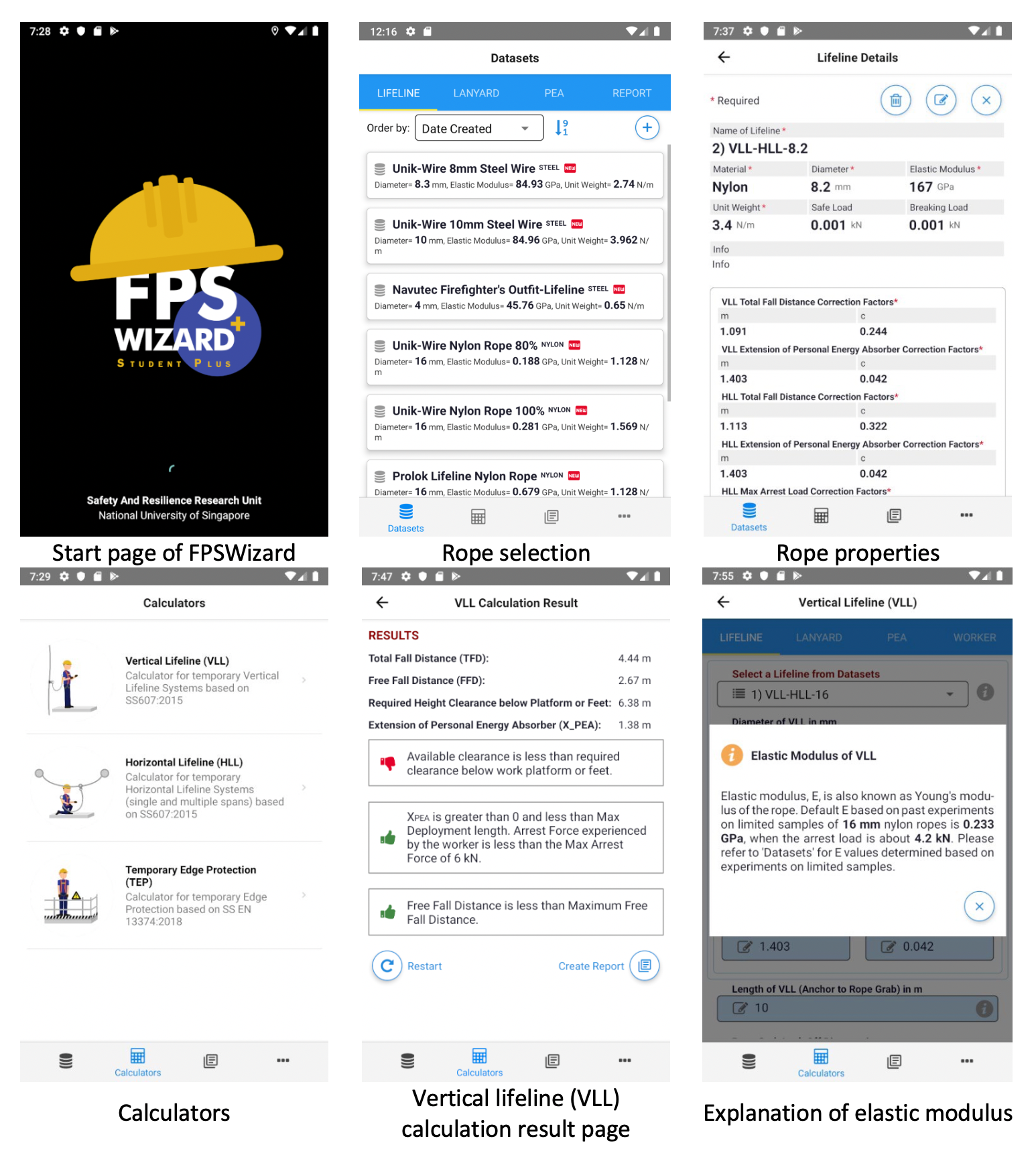Fall Protection Engineering Course and FPSWizard
By Hu Xinping | 01 May 2020
Research Assistant, Safety and Resilience Research Unit (SaRRU), Department of Building, School of Design and Environment, National University of Singapore. E-mail: xinping@nus.edu.sg
Fall Protection Engineering Course
Safe fall protection systems are crucial to any construction site and are an indispensable part of engineering and safety competencies. The Workplace Safety and Health (Work at Heights) Regulations 2013 requires Professional Engineers (PEs) to design all anchorages and anchorage lines of industrial rope access systems. Sections 9 to 11 of the same regulation requires the responsible person and occupier to ensure fall protection systems are safe for use. These regulations are supplemented by codes of practices and Singapore Standards. However, existing safety and engineering courses do not cover the engineering aspects of fall protection systems in sufficient depth [1].
To fill this gap in the industry, Associate Professor Goh Yang Miang, the leader of the Safety and Resilience Research Unit will conduct a fall protection engineering training course in 2020. The course will equip Professional Engineers the skills to design and verify fall protection systems in compliance with the regulation. The programme also introduces a fall protection design tool, the FPSWizard mobile application, which aligns with the vision for the Construction Industry Transformation Map of adopting technologies to build better.
This course aims to equip learners with the necessary knowledge and skills to design and verify common fall protection systems. This includes vertical and horizontal lifelines and temporary edge protection, in accordance with SS 607:2015 Specification for Design of Active Fall-Protection Systems and SS EN 13374:2018 Temporary Edge Protection Systems – Product specification – Test methods.
Participants will gain an understanding of the details of the Singapore standards. They will learn the basis of calculation methods, and to use FPSWizard, an application developed by NUS, to determine forces, clearance and other parameters of fall protection systems based on the relevant standards. They will work through realistic calculation exercises that progressively introduce the different design parameters.
At the end of the programme, learners should be able to:
- describe the relevant legal requirements (to clients and/or management)
- identify components of, and apply technical terminology to, common fall protection systems
- identify relevant specifications and criteria from selected design code that applies to common fall protection systems
- calculate for relevant parameters specified in the selected design code for common fall protection systems with or without the aid of FPSWizard
- verify whether a given calculation complies with the selected design code with or without the aid of FPSWizard
Target participants for the training course include PEs, site engineers, WSH professionals, regulators, and other interested parties who would like to take up or are already involved in the design, endorsement, and verification of fall protection systems.
FPSWizard (Fall Protection System Wizard)
FPSWizard is an easy-to-use mobile application that facilitates the selection and design of fall arrest systems and temporary edge protection for work-at-heights. Features of FPSWizard include calculation and verification of the adequacy of temporary fall protection systems including: vertical lifeline systems, horizontal lifeline systems, and temporary edge protection. All calculations are done in compliance with the relevant standards, SS 607:2015 and SS EN 13374:2018. The calculations are based on the energy balance approach and are validated by experiments [2,3].

References
[1] Goh, Y. M., & Wang, Q. (2015). Investigating the Adequacy of Horizontal Lifeline System Design through Case Studies from Singapore. Journal of Construction Engineering and Management, 141(7), 04015017. doi: https://doi.org/10.1061/(ASCE)CO.1943-7862.0000989
[2] Lim, W. C., Tashrif, S. M., Goh, Y. M., & Adrian Koh, S. J. (2019). Validation of the energy balance approach for design of vertical lifeline systems. International Journal of Occupational Safety and Ergonomics, 1-13. doi: https://doi.org/10.1080/10803548.2019.1616948
[3] Tashrif, S. M., Lim, W. C., Goh, Y. M., Hu, X., & Adrian Koh, S. J. (2020). Experimental Validation of Energy Balance Approach for Design of Horizontal Lifeline Systems. International Journal of Occupational Safety and Ergonomics, doi: https://doi.org/10.1080/10803548.2020.1763031
Further reading:
Goh, Y. M., & Love, P. E. D. (2010). Adequacy of personal fall arrest energy absorbers in relation to heavy workers. Safety Science, 48(6), 747-754. doi: https://doi.org/10.1016/j.ssci.2010.02.020

